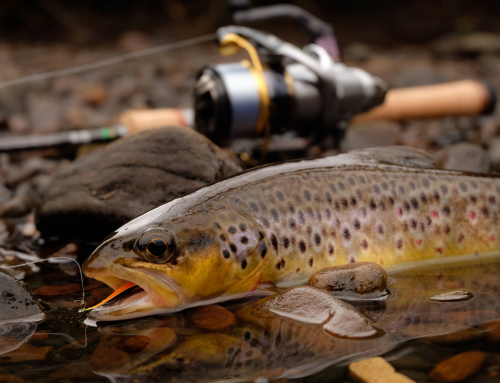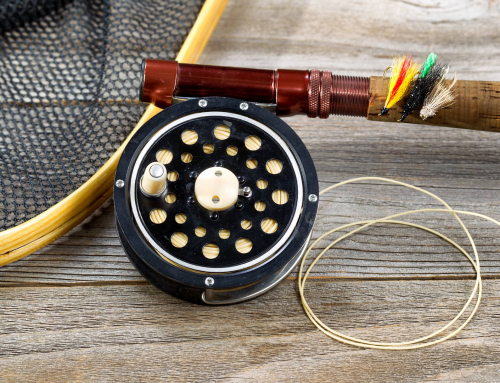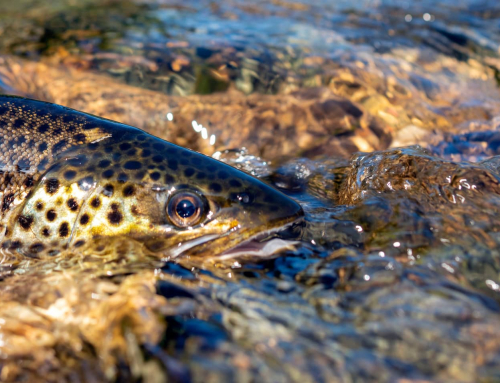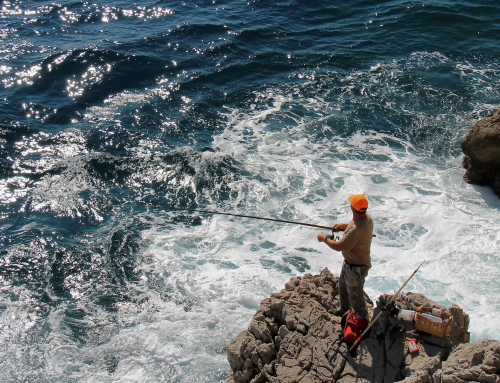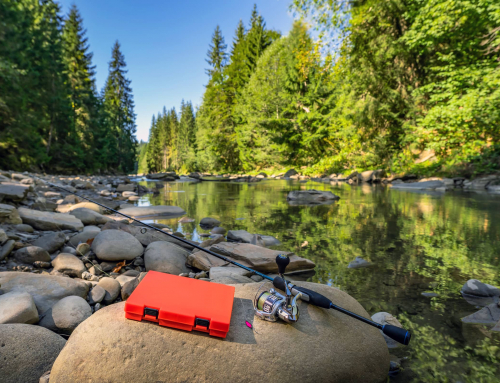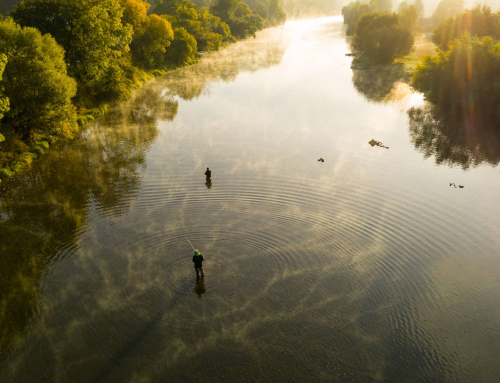We may earn money or products from the companies mentioned in this post at no additional cost to you.
What is the best fish finder on the market?
Back in the day, a fish finder was someone who knew the local waters and where fish hide. Now it’s an advanced piece of tech that gives all the information you need to reel in the big boys. Fishing might be an ancient pastime but like any other activity it’s not immune to advancing technology. You love your Uncle Bill’s fish finding brain but if you’re not with Bill or exploring new waters you need tech to find fish – you need a fish finder.
Fish finders have come a long way from the rudimentary black and white finders of yesterday to the capability-filled, information-driven finders available now. If you want your best shot at catching the best fish, you need a high-quality fish finder.

Unfortunately, the market is flooded with low-quality or pricey finders that don’t work as well as advertised. Considering a fish finder is one of the most sizeable angling purchases you’ll make you don’t want to cheap out or follow bad information.
River Fly Fish Company has evaluated and researched dozens of different finders to cut through the fluff and give you the information you need to make an informed purchase. We’ll go through Fish Finders 101, show you ten great fish finders, why we like them, and what you can expect to pay. A great fish finder can make the difference between getting skunked and filling your live well, so do your homework to make the right buy.
Fish Finder Basics
What Can Fish Finders Do?
Smart technology has infiltrated all tech including fish finders. Today’s fish finders can record water temperature, water direction, depth, structure, help you plot and save routes, alert you to real-time weather information, and much more. Not everyone needs a fully capable thousand-dollar fish finder meant for deep sea angling but rather one that fits your needs and budgets.
How Does a Fish Finder Work?
Smart technology has infiltrated all tech including fish finders. Today’s fish finders can record water temperature, water direction, depth, structure, help you plot and save routes, alert you to real-time weather information, and much more. Not everyone needs a fully capable thousand-dollar fish finder meant for deep sea angling but rather one that fits your needs and budgets.
Types of Fish Finders
What to Look for When Buying a Fish Finder
There are dozens of different finders on the market from beginner handhelds to complex and information-packed devices. The best finder for you depends on what type of fishing you do and what you want out of your finder. When browsing our ten best finders consider these factors:
Display – The finder’s display translates all the information into a readable screen for the angler. If you have a cruddy display, what’s the point of having a finder? The two qualities you want to look for all display size and pixel quality. When it comes to size, the bigger the better (if you also have a high pixel count.) Bigger screens are easier to read, use, and view from multiple angles.
Pixels – You can have the biggest display out there, but it won’t matter if you don’t have a high pixel count or resolution. The more pixels, the sharper the image will be on your display. For your first finder you should shoot for a pixel count of 240 x 240 though more is better.
Capabilities – What can it do and namely, what do you need it to be able to do? Many anglers can get by on a basic fish finder with basic capabilities, but others need more. How accurate do you your finder to be? Do you need route mapping?
Transducer Housing – You need to map the fish finder and its transducer to your style of fishing. Plastic is fine for casual anglers in shallow water, but you’ll need stainless steel for steel or aluminum boats and bronze for wooden boats.
Where Does the Transducer Look? There are all-around, straight down, and side transducers depending on your type of fishing. Many transducers can be manipulated for different types of fishing.
Types of Beams – Most modern fish finders use two or four beams aimed in different directions to give you a broad picture of what’s going on underneath. Two beams are industry standard but four or more is better.
Frequency – Frequency is important to match to your fishing style. High frequency transducers use 455-800kHz to look around while low frequency transducers use 455kHz or fewer. Higher frequencies provide sharp detail but only to a short depth while low frequency transducers provide better pictures of larger fish at greater depths.
Traditional vs. CHIRP vs. DownScan
A traditional (also known as 2D) sonar uses one to two frequencies beamed down and back to form its information, but Compressed High Intensity Radar Pulse (CHIRP) takes advantage of broadband to cast multiple frequencies. More frequencies give accurate and detailed data you’re not going to find with a traditional fish finder.
DownScan is a newer type of sonar which casts a much narrower beam off the side of the boat. The narrow, sweeping beams gives a much more detailed readout compared to traditional sonar.
Most new fish finders take advantage of both CHIRP and DownScan technology including more affordable models. When given the choice of traditional vs CHIRP for the same price – always choose CHIRP.
Where Do You Put the Fish Finder?
Don’t make the rookie mistake of buying a finder that doesn’t work for your boat.
- In-Hull – Difficult to install and unnecessary for most anglers. Suited to sailboats and similar craft.
- Transom – Bracket is attached to the transom. The transducer hangs below or behind the boat. Easy to install and most popular style for casual anglers.
- Trolling – Easy to install on troll motor.
- Through-Hull – Glued to inside of the hull. Popular for most freshwater anglers.
Riverfly Fishing Co’s Best Fish Finders
Best Fish Finders for Beginners
Yes, everything is smart nowadays. Even fish finders. The ReelSonar doesn’t come with a display but instead links to an app on your phone to display its information. The ReelSonar comes with a throwable transducer that can read down to around 100’ and while it won’t have the power of more expensive transducers, the app makes fishing much more fun and easier at little cost. Because it’s connected to your smartphone you can get tons of information like weather, points of interest, GPS logging, and much more.
Lucky Handheld Fish Finder ($133.99)
Lucky’s handheld fish finder lacks the capabilities of high-end fish finders but is affordable and perfect for several types of casual anglers. The entire unit is waterproof and floats so no worries about drops. The 200Khz offers plenty of power enough for lake, pond, and river fishing or you can extend the transducer out with the 25 ft extension for a better look around. The Lucky also comes with depth and temperature reader, and a strong 6-hour battery life. A great stocking stuffer for the casual angler in your life.
Garmin Striker Plus 4 ($139.99)
Garmin is a popular name in GPS tech and their Striker Plus 4 is a great starting fish finder for those who don’t spend a ton of time on the water. The Striker comes with a dual-beam transducer for accurate reads and mapping technology to chart places you’ve been or want to study further. A 4.3” display provides you GPS information, routes, and fishing maps. At only 200W the Garmin doesn’t use much juice, but it’s not meant for serious anglers.
Humminbird PirahnaMAX 4 ($99-$175)
You don’t have to shell out to get a great basic fish finder like the Humminbird PirahnaMAX 4. The PirahnaMAX 4 starts with a 4.3” 272 x 480 display that won’t give you the highest quality images, but dual-beam sonar, Fish ID +, fish and depth alarms, and other 2D capabilities round out a solid finder for most freshwater anglers. The Humminbird spikes up to 455KhZ to help you find fish in shallow or deeper water.
More Advanced Fish Finders
You might think a fish finder is worthless for fly fishing but that’s not true with a castable fish finder. While many of the fish finders on our list are built for motorized boats, Deeper Pro+’s Smart Sonar Castable can be used by kayakers, canoers, and shore fishers. The Deeper Pro+ can help you find drop-offs, inlets, and other areas where fish are hiding and give the right information to get them on the line. You can also link the sonar to a smartphone app to record photos, points of interest, and much more. Castable sonar is also perfect for ice fishing.
Lowrance Hook Reveal 5 ($299.99)
Lowrance makes high-end finders but not everyone needs the capabilities of a four-figure finder. If you’re ready to step up from a basic finder it’s time for the Lowrance Hook Reveal 5. The Hook Reveal 5 comes with a 5” display at a high 800 x 400 resolution to give you clear readouts from every angle. The Reveal comes preloaded with C-MAP preloaded mapping, a split shot transducer with high-tech CHIRP sonar and high resolution DownScan imaging. Throw in auto tuning sonar, GPS plotting, and the Lowrance is a capable finder for several types of anglers.
Garmin Striker Vivid 7cv ($399.99)
The Striker 7 might be the most well-rounded fish finder for the price on our top ten list. The Striker begins with a 7 inch (the Vivid is also available in 4, 5, and 9 inch) 800 x 480 vividly colored screen that can be split into multiple screens to access all your data at once. Garmin’s QuickDraw and CHIRP Clear Vu gives a highly accurate picture of depths well below 200 feet with further information from the connected ActiveCaptain smartphone app.
Advanced Fish Finders
Humminbird Helix 7 Chirp ($499.99)
The Helix 7 starts with a 7-inch screen at 800 x 480 resolution providing a clear picture of what’s going on. Dual Spectrum CHIRP sonar provides views to 125 feet down and 125 feet off the side of your boat for plenty of view. Mega Side Imaging lets you view multiple screens at once to help you get right on top of the fish. A fantastic overall finder for anglers who are ready to get serious.
Garmin ECHOMAP UHD ($824.99)
Garmin’s Striker Plus 4 is perfect for many anglers, but if you’re venturing into unknown waters or need more information, you’ll need something better. Garmin’s ECHOMAP is a highly capable and highly intelligent fish finder, with a touchpad, 7” display, and high pixel count for sharp images. The ECHOMAP gets its information from Garmin’s Panoptix Live Scope radar, giving anglers extremely accurate and detailed readouts on structure, fish, and more. Navionics integration for route mapping and marking polishes off this great finder.
Lowrence HDS-Live ($1,099 – $4,399)
Lowrence’s HDS series is absolutely packed with technology leading to multiple types of easy-to-read maps for anglers. With dual processors the HDS can refresh maps and information faster than any other finder on our list with dual-channel capabilities allowing you to view multiple frequencies at once. An ultra-high resolution 1024 x 680 gives a crystal-clear picture. The HDS Live series is available in 7, 9, 12, and 16-inch screens.
Finding the Right Fish Finder
There are several factors when choosing a fish finder including display, capabilities, frequency, type of boat it’s used for, price, needs, and more. By using the above tips, you can find the perfect fish finder that’s both in your budget and does what you need. With a great fish finder, you’ll be pulling trophies out in no time.






























